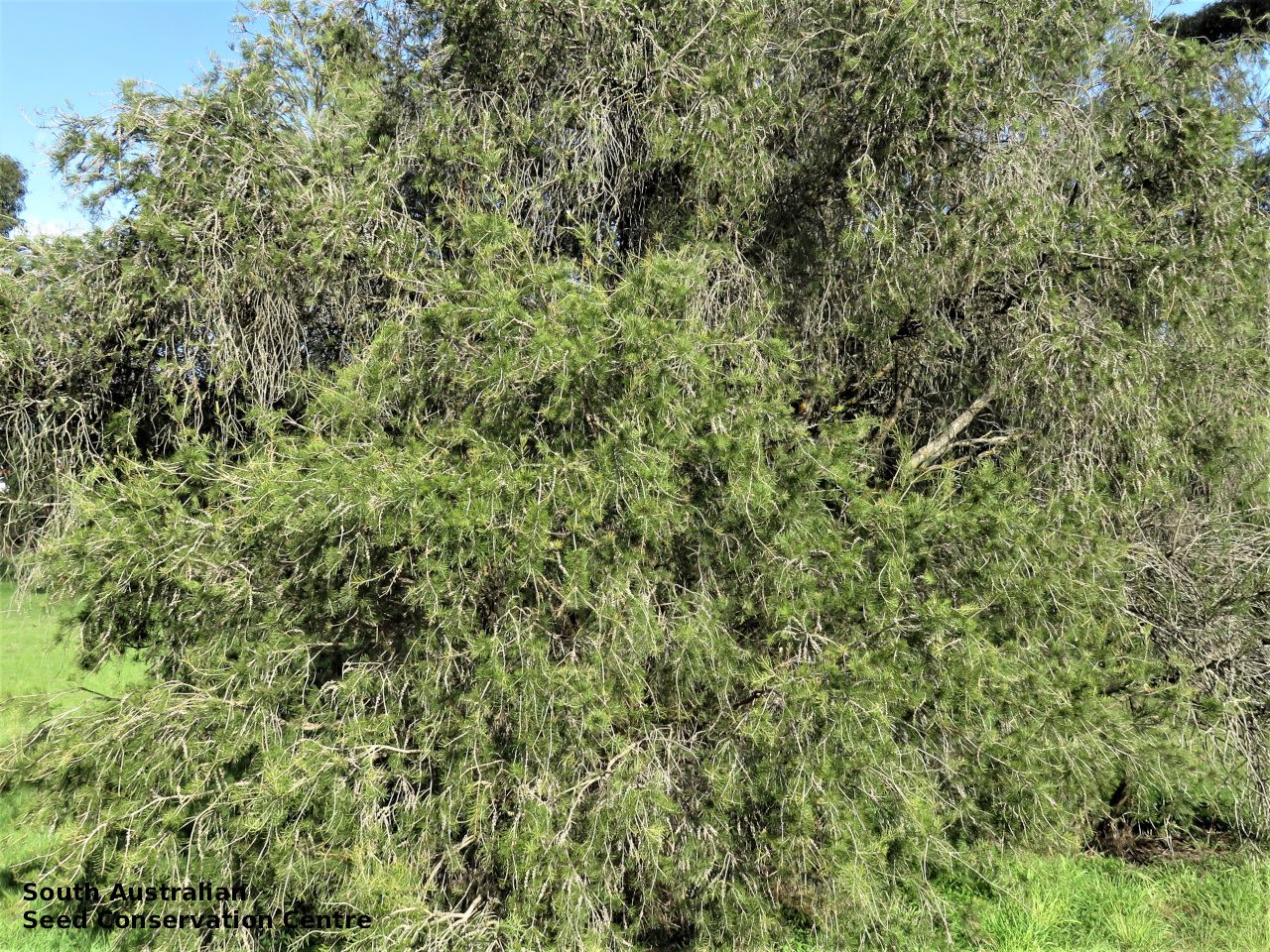
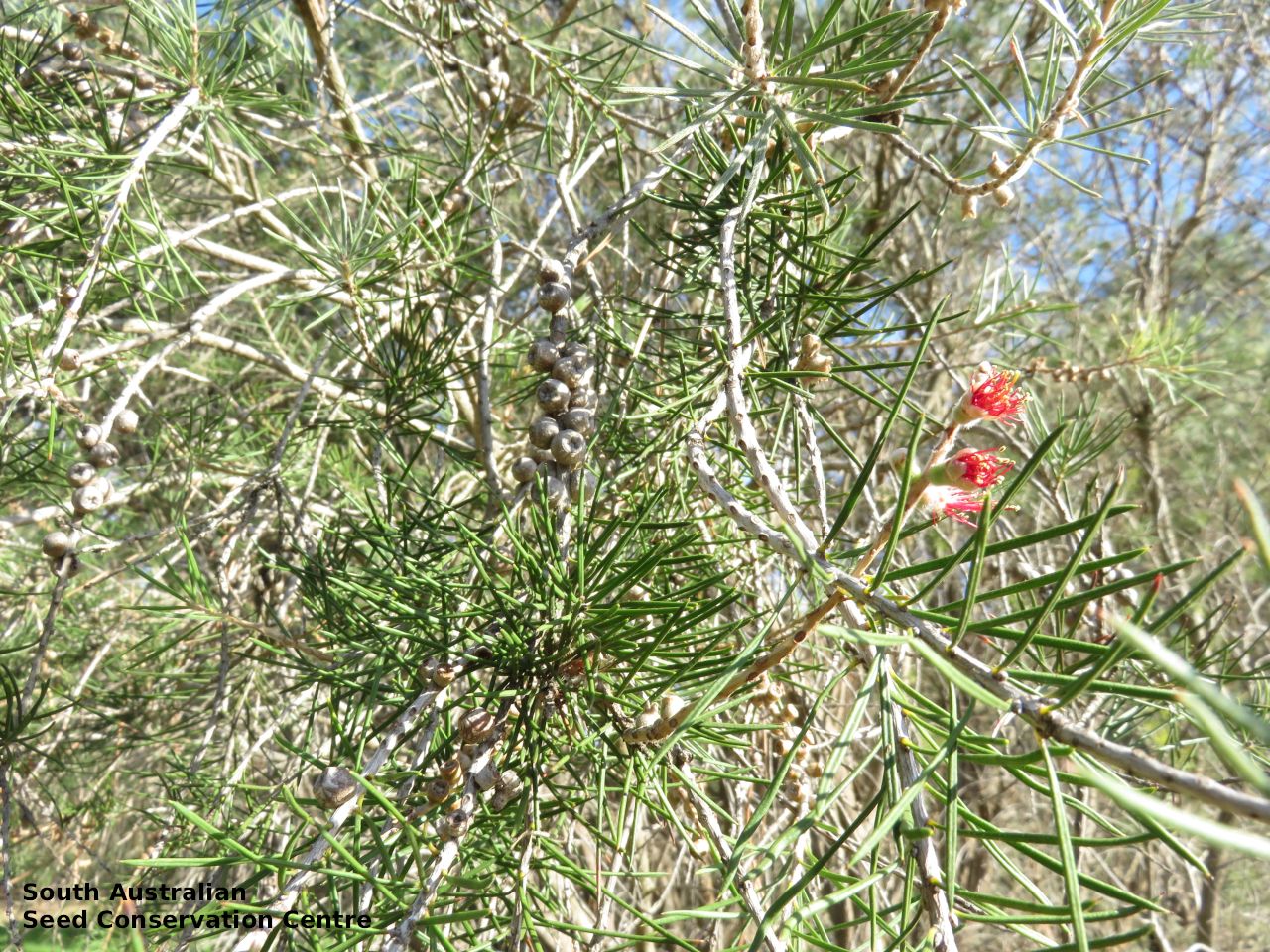
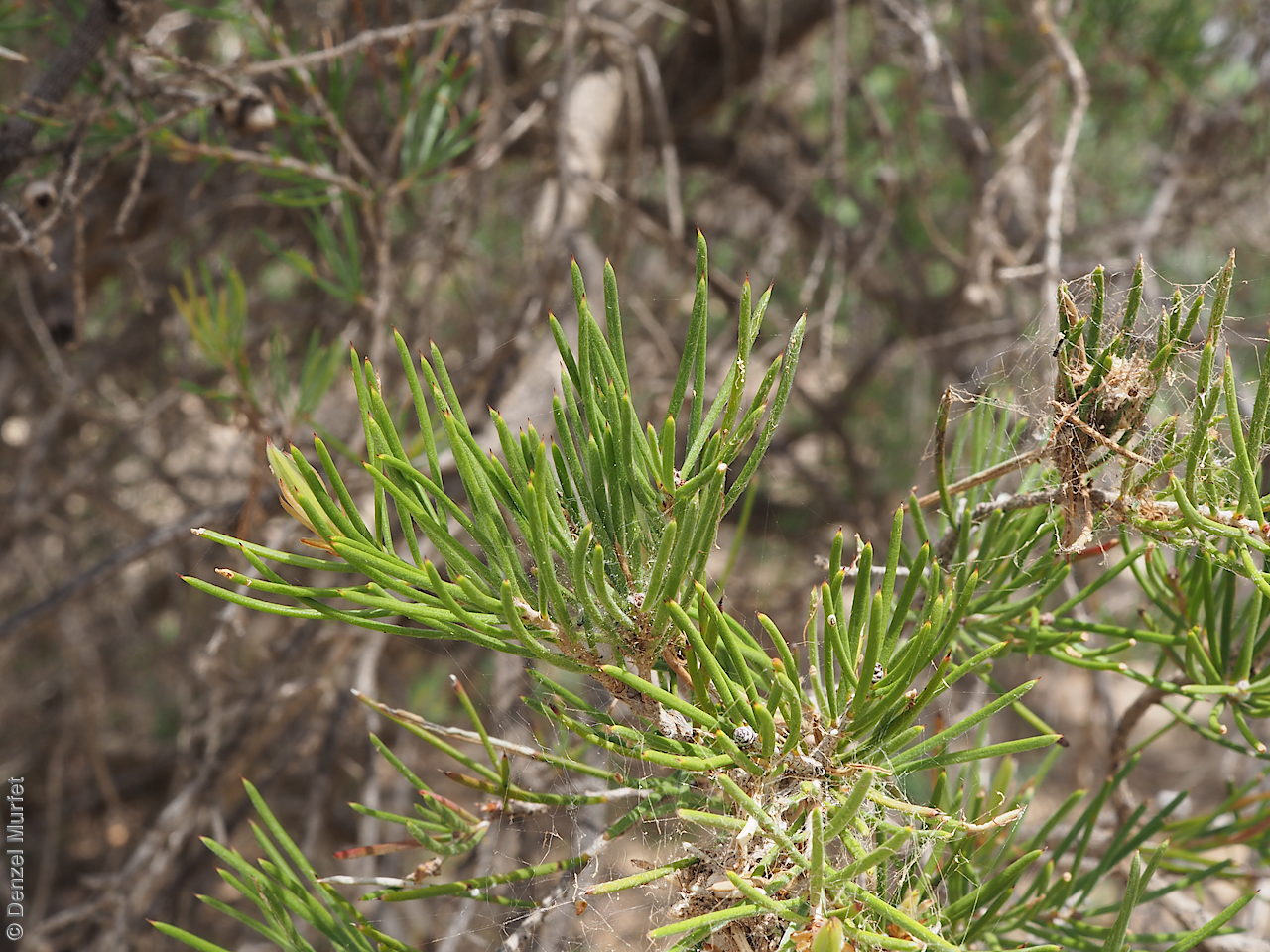
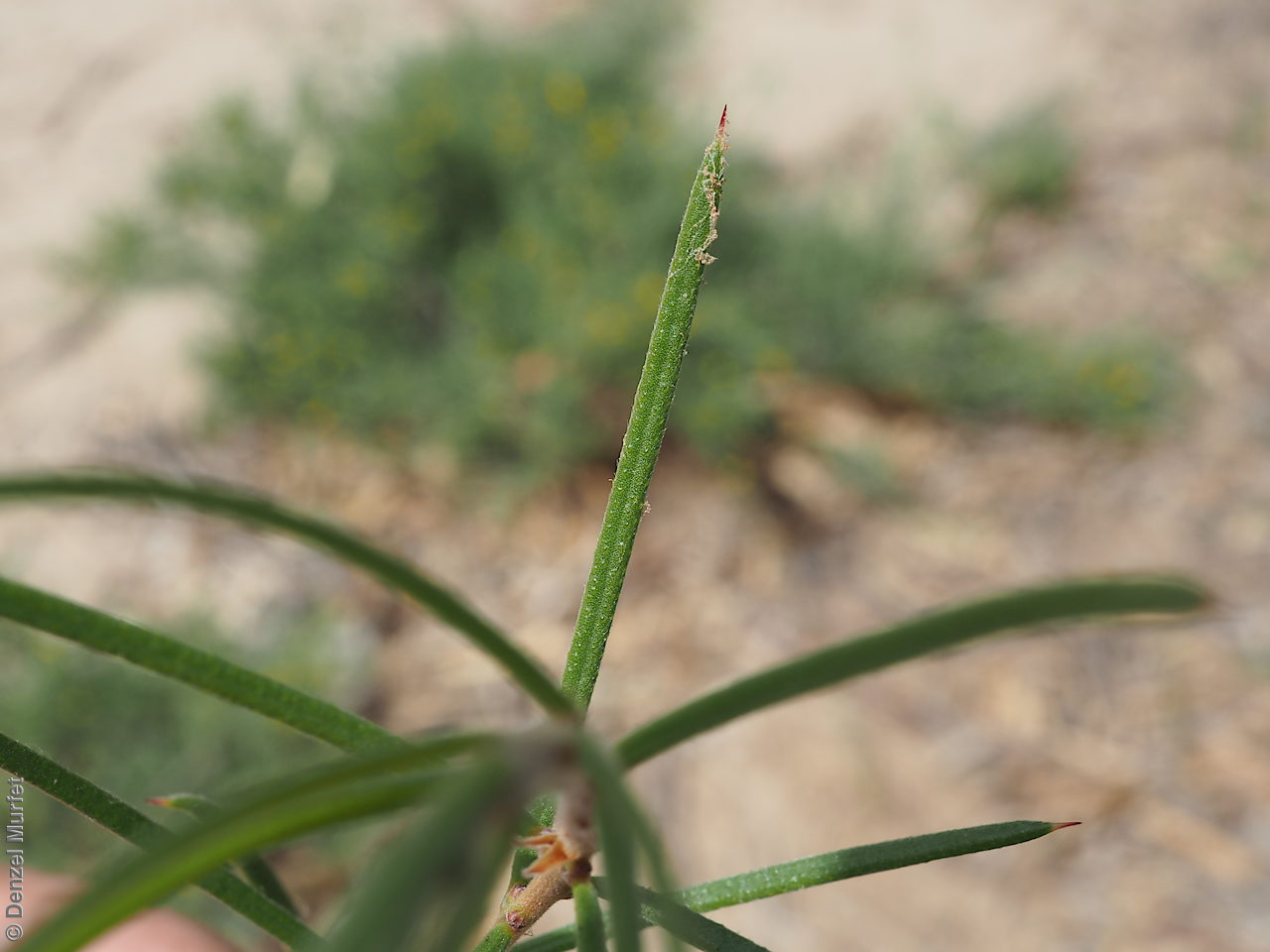
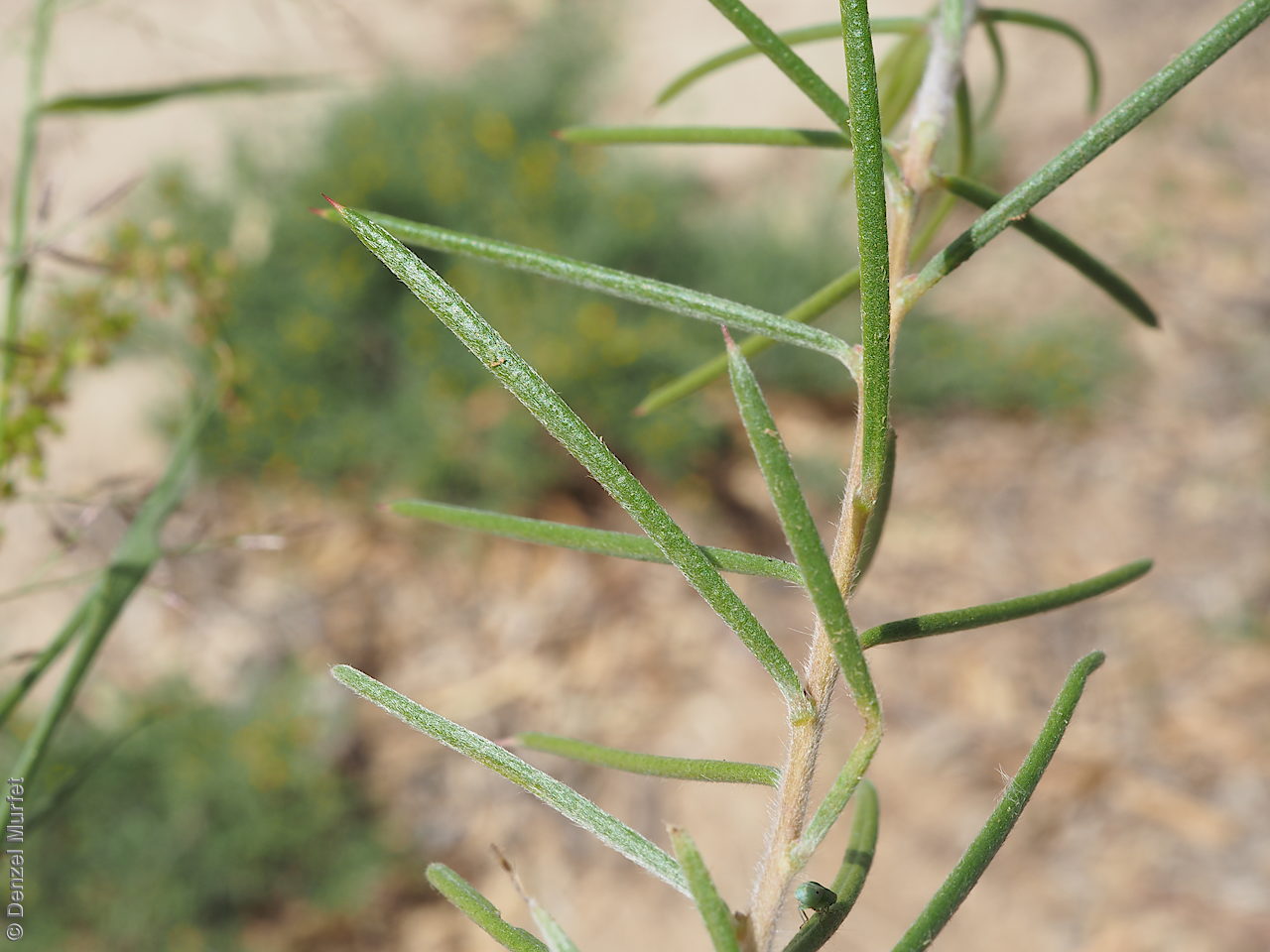
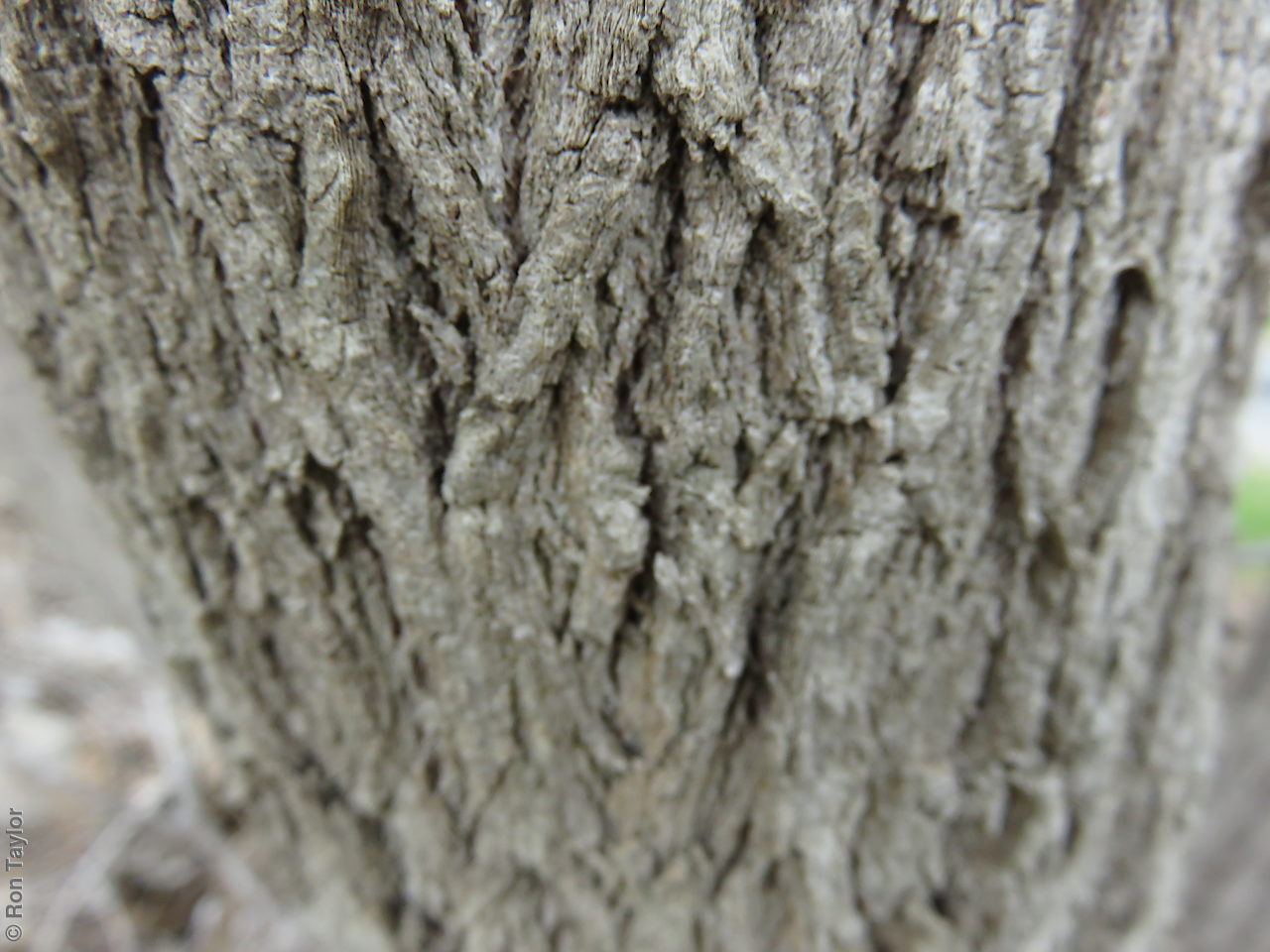
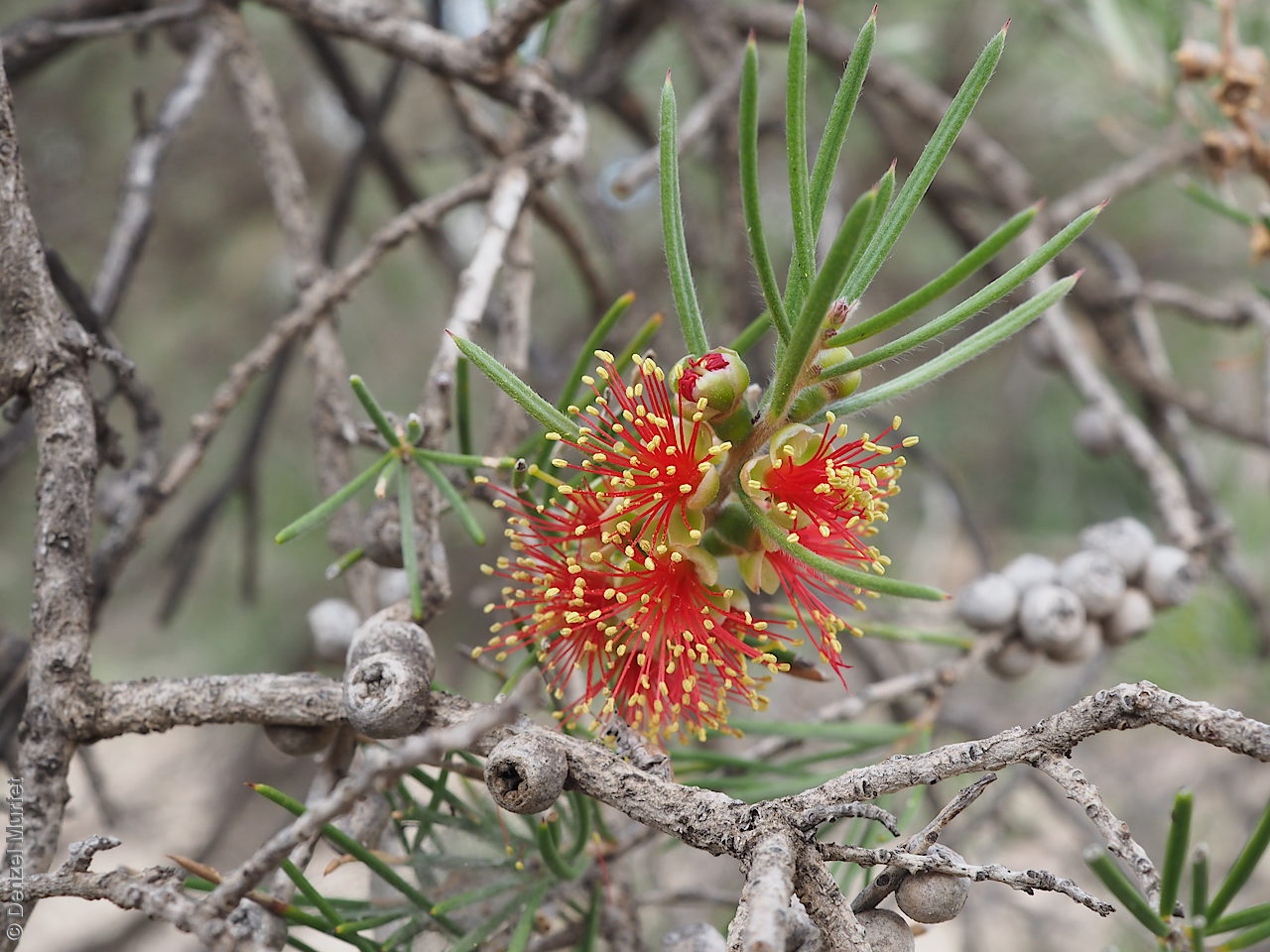
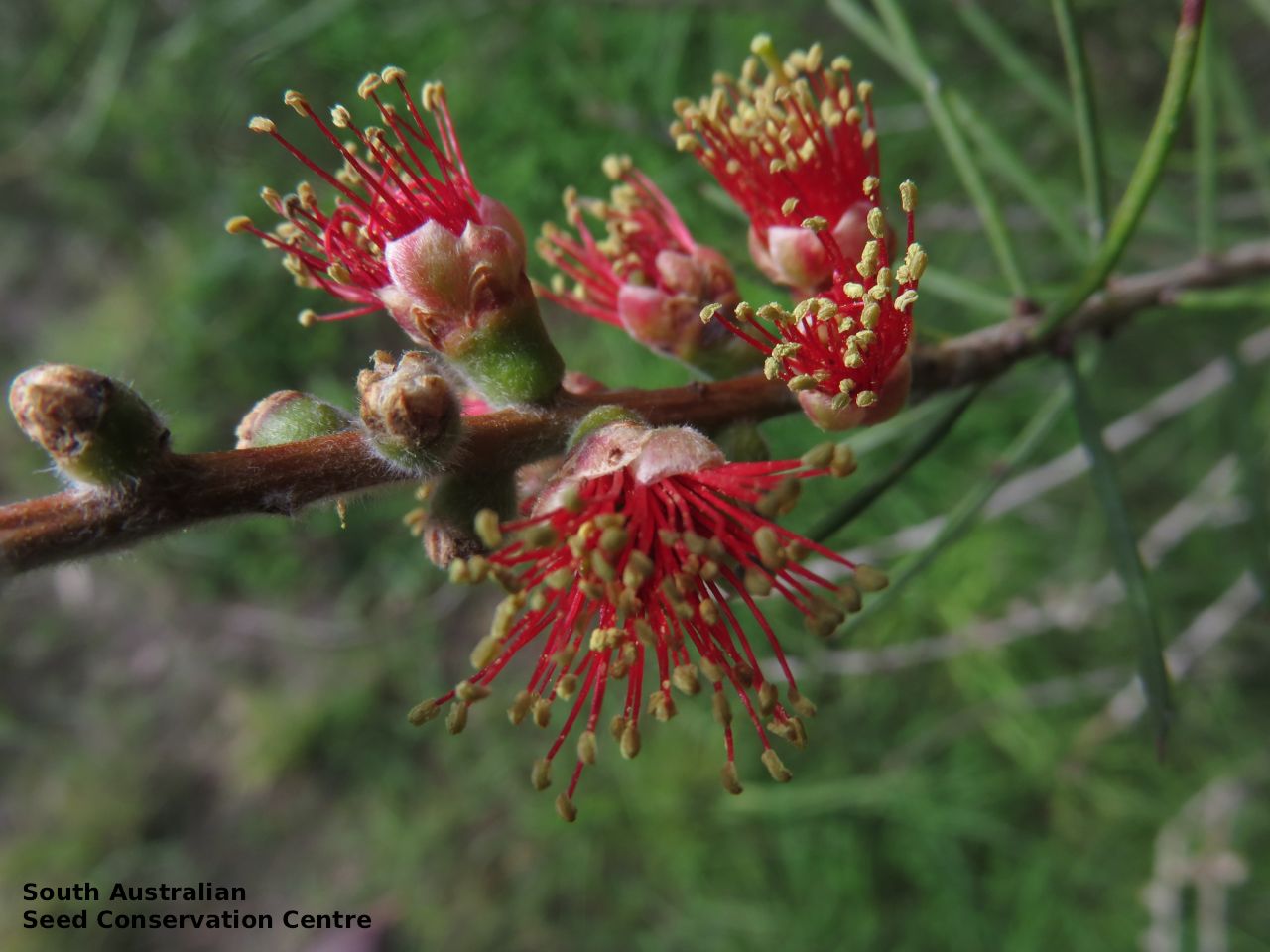
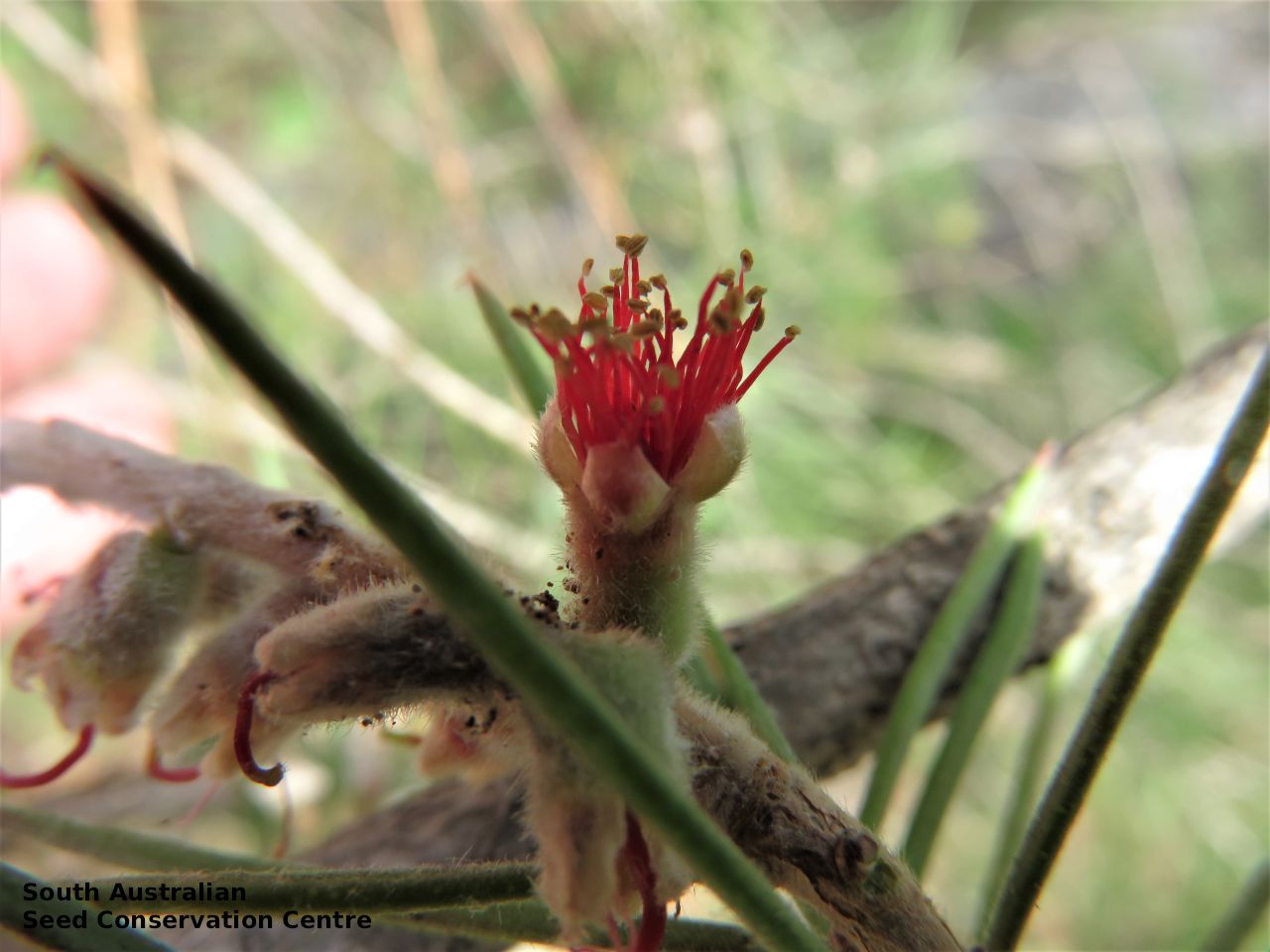
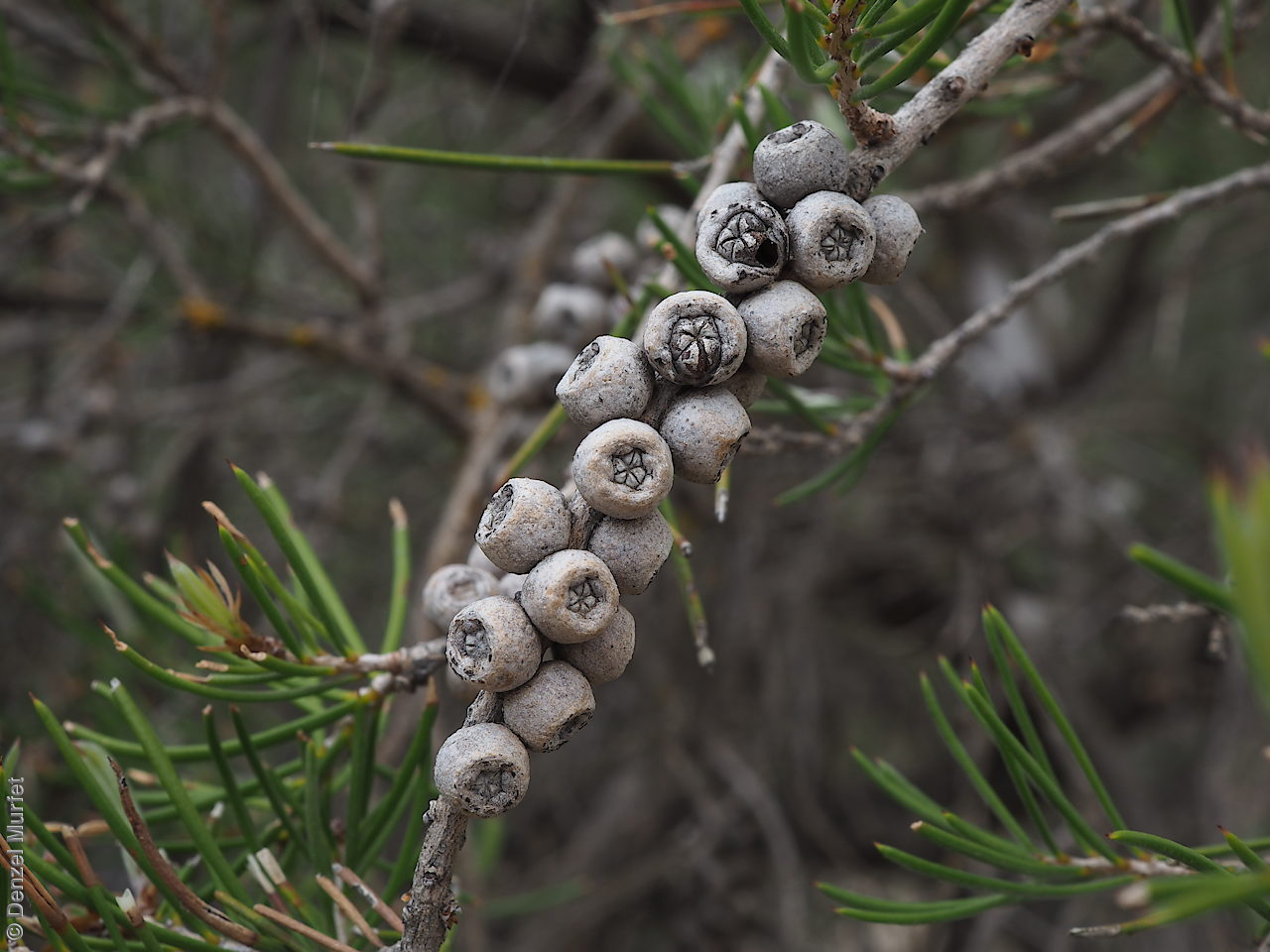
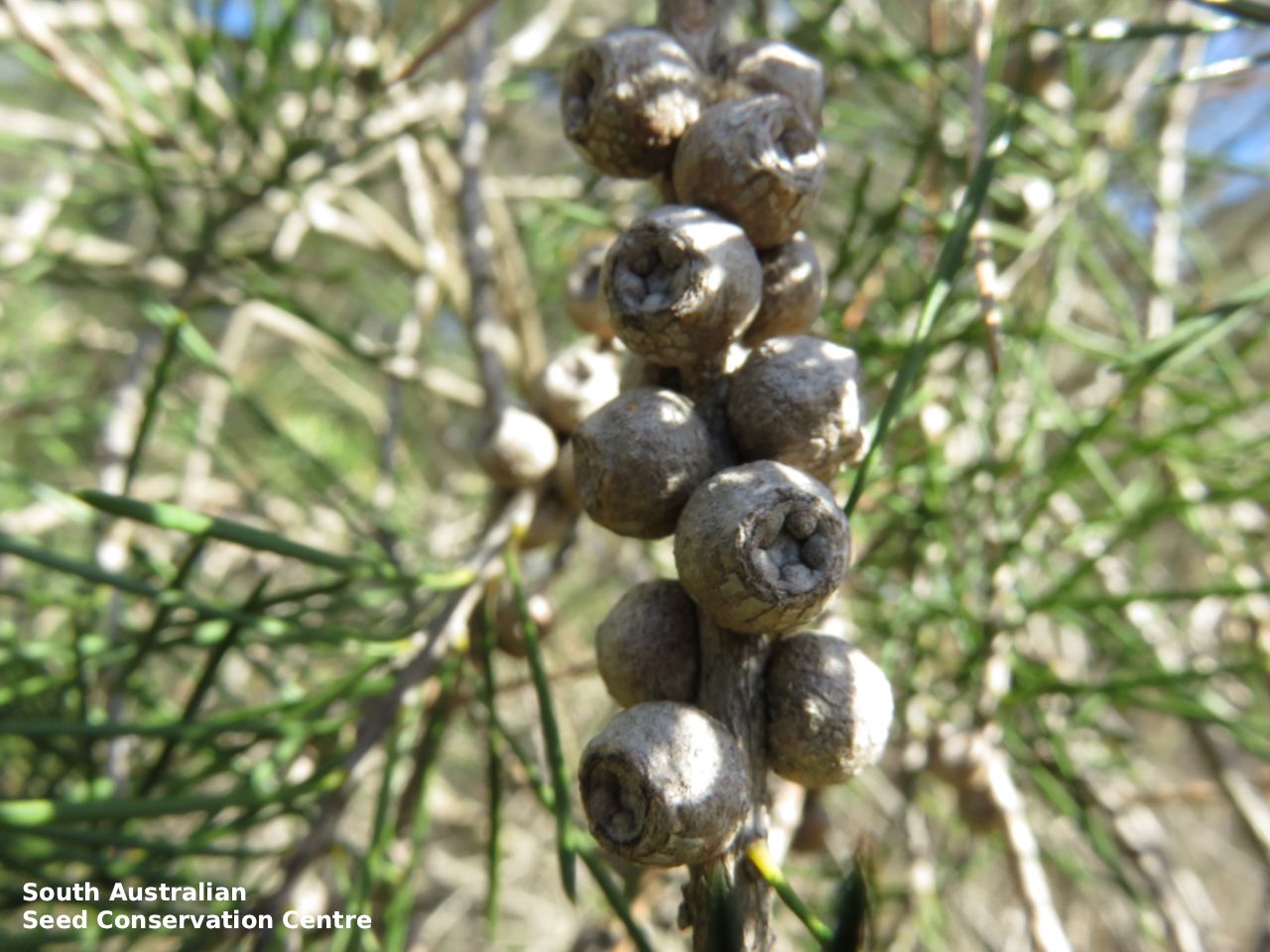
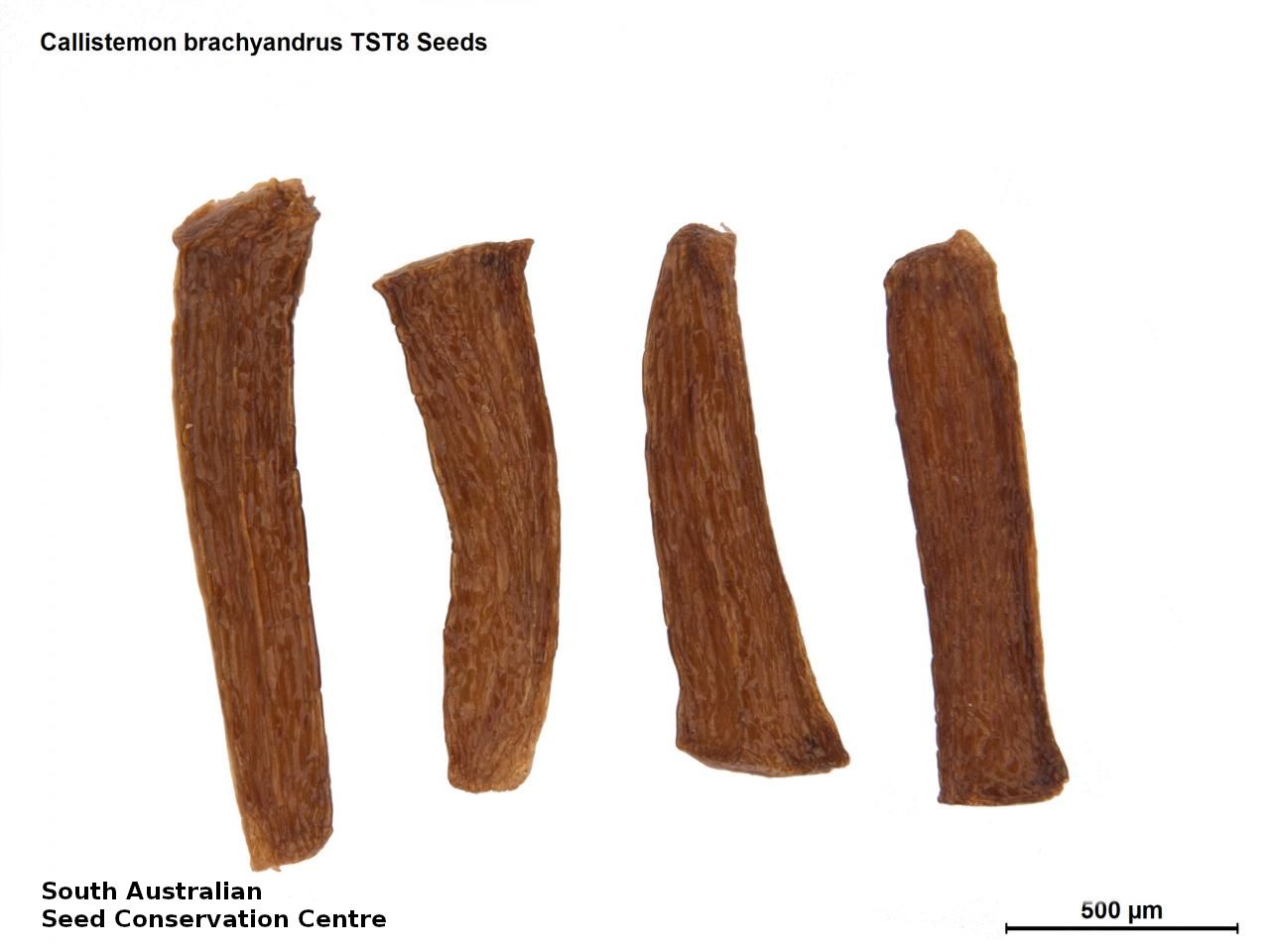


Botanical art
Prior names
Melaleuca brachyandra
Common names
Prickly Bottlebrush
Etymology
Callistemon from the Greek 'kallos' meaning beauty and 'stemon' meaning a stamen, alluding to the beautiful flowers of the genus. Brachyandrus from the Greek 'brachys' meaning short and 'andrus', adjectival form of 'anthropos' meaning man, alluding to its short stamens.
Distribution and status
Found along the Murray River in South Australia mainly between Swan Reach and Wailkerie growing in the sandy soils of alluvial flats. Also found in New South Wales and Victoria. Native. Rare in South Australia. Rare in Victoria. Common in New South Wales.
Herbarium region: Murray
AVH map: SA distribution map (external link)
Plant description
Stiff shrub or small tree to 3 m tall with grey bark, becoming fissured. Leaves terete to narrow-oblanceolate, sharply pointed to 30 mm long and 1 mm wide; margins in-rolled to form a groove on the upper face. Inflorescence a cylindrical spike to 50 mm long and 27 mm wide, open flowers with rich crimson stamens and bright-yellow anthers. Flowering between February and March. Fruits are grey-brown woody capsules to 5 mm long and 5 mm wide; valves about half the width. Capsules remain on the branches. Seeds are tiny brown rectangular seed to 1.5 mm long and 0.3 mm wide. Seed embryo type is folded.
Seed collection and propagation
Collect seeds between January and December. Collect capsules that are large and hard with closed valves, preferably collect from older, woody capsules. Place the capsules in a tray and leave to dry for at least two weeks or until all the valves are open. Then place all the capsules into a bucket with a lid if possible and shake hard to dislodge the seeds from the capsules. Use a sieve to separate the seeds from the capsules. The fine material will contain the seeds and other flowering material. It is very difficult to separate the seeds from this other material as the size, shape and weight are very similar. However the seeds will be a darker brown and more fleshy looking. Store the seeds with a desiccant such as dried silica beads or dry rice, in an air tight container in a cool and dry place. From two collections, the seed viability was high, ranging from 95% to 100%. Seeds are non-dormant, viable seed should germinate readily.
| Location | No. of seeds (weight grams) | Number of plants | Date collected | Collection number Collection location | Date stored | % Viability | Storage temperature |
|---|---|---|---|---|---|---|---|
| BGA MSB | 537,000 (145 g) 350,000 (97 g) | 50 | 27-Apr-2006 | TST8 Murray | 7-Aug-2006 | 95% | +5°C, -18°C |
| BGA | 375,000 (9.32 g) | 1 | 28-Apr-2006 | TST7 Murray | 7-Aug-2006 | 100% | -18°C |
Number of plants: This is the number of plants from which the seeds were collected.
Collection location: The Herbarium of South Australia's region name.
% Viability: Percentage of filled healthy seeds determined by a cut test or x-ray.